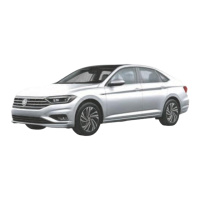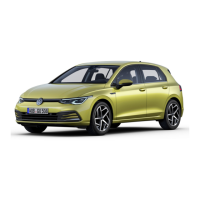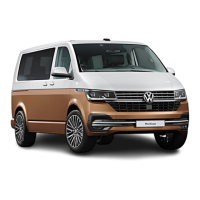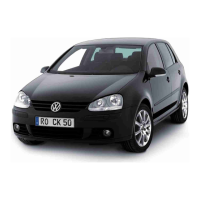Transporting children safely
If a rearward-facing child seat is used in the front
passenger seat, there is an increased risk of very
serious or fatal injuries to the child in the event of
an accident.
•
Deactivate the front passenger frontal airbag.
If the front passenger frontal airbag cannot
be deactivated, do not use a child seat.
oriented in the opposite direction to the
direction of the sea.
•
Move the passenger seat as far back as
possible and raise it as far back as possible so
as to leave as much distance as possible to the
front passenger seat.
The front passenger frontal airbag.
•
Place the backrest of the vehicle seat in an
upright position.
•
Adjust the height of the seat belt so that the
seat belt webbing fits the child seat naturally,
without deflecting the seat belt.
be a lot. If a child seat is fitted, the child seat
shall be mounted on the seat.
Instructions for the installation of a
child
seat
When fitting a child seat, please observe the
following general information. They apply to all
child seats, irrespective of their mounting system.
—
Read and follow the instructions of the
manufacturer of the child seat → .
—
It is best to mount the child seat in the space
behind the passenger seat so that the child can
get out of the vehicle on the curb side.
—
Adjust the height of the seat belt so that the
seat belt webbing fits the child seat naturally,
without being too wide. If a rearward-facing child
seat is fitted, set the belt height adjuster to the
lowest position.
—
If the rearward-facing child seat is installed in
the front passenger seat, deactivate the front
passenger frontal airbag.
—
If the child seat is mounted on the front
passenger seat, move this seat all the way back
and raise it as far as it will go. Place the seat
backrest in an upright position
→ p. 35.
—
Always leave sufficient space around the child
seat. If necessary, adjust the front seat
accordingly, observing and following the
information on the correct position of the driver's
and front passenger seat → page 35.
—
The backrest of the child seat should be as close
as possible to the backrest of the vehicle seat. If
necessary, adjust the inclination of the vehicle
seat backrest so that the child seat is completely
against the vehicle seat backrest. If, after
installation, the child seat touches the vehicle's
head restraint and therefore cannot rest against
the backrest, raise the vehicle's head restraint
as far as it will go or remove the head restraint.
and store it securely in the vehicle.
→ p. 35.
Airbag-related sticker
There may be stickers in the vehicle with
important information about the front passenger
frontal airbag. The information may vary from
country to country. The stickers may be affixed at
the following locations:
—
on the driver's sun visor and, if necessary, on
the front passenger's sun visor → fig. 43;
—
on the B-pillar on the passenger side → fig. 44.
Before installing a rearward-facing child seat,
always observe the warnings → .
Dangers of transporting a child in the
passenger
seat
If a
rearward-facing
child seat is used
and the
front passenger
air
bag
is triggered, this
could result
in serious or fatal injuries → .
Only use rear-facing child seats in the front
passenger seat if the front passenger airbag is
deactivated → page 45. Deactivation of the front
passenger airbag is indicated by the PASSENGER
AIR BAG control indicator in the driver's field
of vision, which lights up yellow → page 46.
When using a
forward-facing
child seat
, do not
deactivate the front passenger frontal airbag.
When installing the child seat, allow as much
distance as possible from the front passenger
frontal airbag. If the front passenger frontal airbag
is triggered, serious injury may occur.
see → .
Not all child seats are approved for use in the front
passenger seat. The child seat must be specially
approved by the manufacturer for use in the front
passenger seat of vehicles with front and side
airbags. A current list of approved child seats is
available from your Volkswa- gen dealer.

